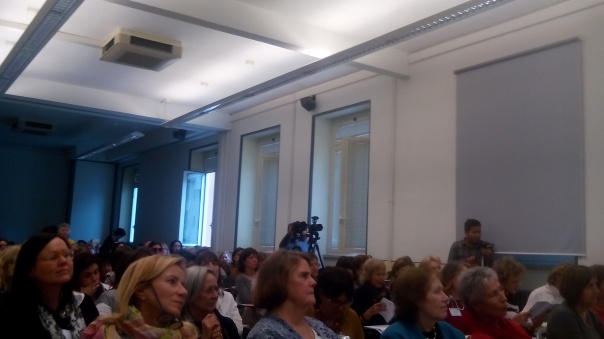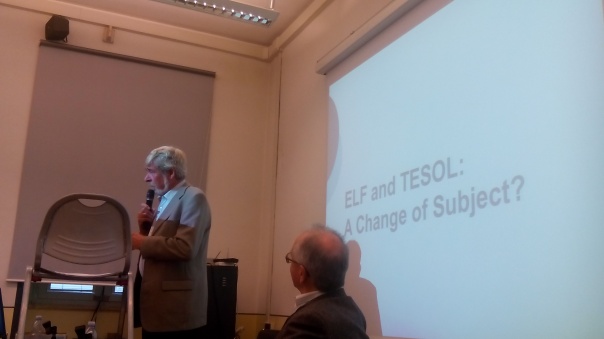This has got to be the most interactive and fun session I attended at TESOL Italy 2015. It was sponsored by Pilgrims and Paolo mentioned that there will be a course on improvisation in EFL run both in July and in August 2016, at Pilgrims, in Canterbury, by Peter Dyer (more info here).
But back to the workshop. There was no ppt. No lecturing or the audience listening with hidden yawns. Instead, there was a lot of practice, and as the title suggests, communication and cooperation in speaking and writing activities.
I came in slightly late, so missed the instructions to the first activity, but the other teacher I was paired up with explained that we had to improvise and pretend we were giving a gift to each other. One person gives the present, without saying what it is. The person receiving it has to accept it, thank for it, and choose what the gift is, i.e. improvise (Paolo is grateful to Peter Dyer, who developed this activity). Then we swapped roles.
Very simple, but very effective at the same time. The whole room seemed very engaged, and I could see it working very well with real students too. It was fun, involved creativity, a bit of acting, and plenty of opportunity for students to practice some functional language.
After the activity, Paolo explained the basic framework that we would also use in the following demos. The underlying pattern looks like this:
- Yessing, or accepting your partner’s contribution
- Adding, adding some info in order to let the action/dialogue take place, and go on, for example:
- Yes and…
- Paolo pointed out we should avoid contradicting, i.e. patterns such as ‘Yes, but/however’, because it works as a blocking device, and can lead to ‘conversation paralysis’
So the next demo was called ‘One word at a time’ and was adapted from a book by Keith Johnstone, Impro. Improvisation for the Theatre, published in 1981 by Bloomsbury, London. We were put in pairs with a different teacher and had to imagine we were now one person having an internal dialogue. We can only say one word at a time and we can’t contradict our partner. Paolo demoed the activity with a volunteer:
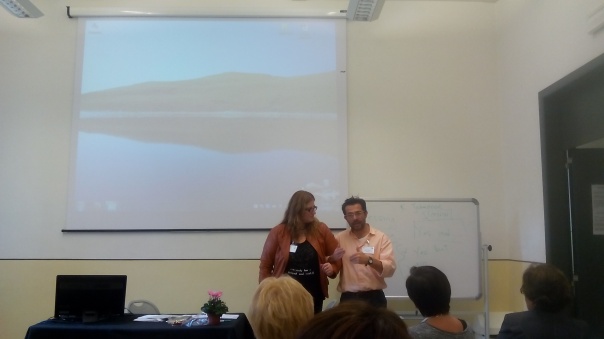
We were then asked to choose a context, and for one reason or another somebody shouted out ‘desert!’, so we ended up having to construct an internal dialogue while being in the middle of a desert… It went kind of like this:
A: We…
B: …are…
A: …looking…
B: …for…
A: …well…
B: …because…
I can’t remember the rest exactly, but it involved finding a gold fish and eating it for dinner – I know, English teachers can have bizarre ideas sometimes.
Again, everyone was very engaged and active. And as with the previous activity, I can see it work really well with students. Lots of room for individual creativity, but at the same time quite demanding linguistically, to be honest. A possible follow up could be to retell the dialogue to a new partner, or even write it down, or record it at home.
The next activity was dynamic storytelling developed by Peter Dyer. One volunteer had to come to the front to start the story by saying a sentence. Again, it was left purely up to us what the context would be, and if I remember right, it was: Once upon a time there was a wolf. Perhaps not terribly imaginative, but it did the trick: starting the story off. The next volunteer would come to the front and say another sentence. But the sentence could be from anywhere in the story: right after the first one, the middle, or the end. The person would stand in a line either close to the first volunteer, or far away, depending on where in the story their sentence would come. And off we went. Again, it was fun, engaging, with lots of language practice. There was a lot of repetition, as you had to remember your sentence and the ones around you to make sure the story would flow. There was definitely plenty of room for peer correction too. As with the previous ones, the creative aspect had us all very much engaged.
In the second part of the workshop we looked at improvisation and creativity for writing activities. Again, they were surprisingly simple, but at the same time very effective and engaging.
Among several that we saw, I will describe the first one, which was group picture activity. It starts with an empty white board. The first volunteer draws the first picture. It can be anything. I think in our case it was a palm tree. The next person adds another picture or element to it, and so on (this activity comes from Sion C., 2000, Creating Conversation in Class, Delta, Peaslake). Once there are quite a few things drawn, Paolo explained that there are several ways in which the pictures could be used as a springboard for writing activities. For example:
- Write the names of the objects
- Create a dialogue between the people in the pictures
- Create an sms (or perhaps in our modern times Whatsapp or FB) chat
- Write a story connecting the pictures
- Fill in the empty parts of the board with a story
I imagine this would lend itself nicely to a speaking activity too, either before or instead of the writing phase. I’d imagine the students being quite engaged in the writing, because it’s their story, rather than one imposed by the teacher. A scaffold is developed by the students and for the students, and there is plenty of room for individual creativity.
I would have certainly enjoyed doing these activities in a language class.
My other summaries from TESOL Italy 2015 sessions can be found here:
- ELF and TESOL: a change of subject? plenary by Henry Widdowson
- Learning to teach listening: students’ and teachers’ perceptions. by Chiara Bruzzano
Paolo Torresan obtained his PhD in Linguistics and Romance Philology at Ca’ Foscari University, in Venice. He has carried out research at Complutense University, Autonoma University, in Madrid, and at Lancaster University. He has taught at Rio de Janeiro State University and Santa Monica College, Santa Monica, CA. He is Editor-in-chief for the following journals: Officina.it and Bollettino Itals. Among his books we mention: The Multiple Intelligence Theory and Language Teaching (Perugia 2010). He’s also studied improvisation at the Groundlings school, in LA. You can get in touch with Paolo through his profile on academia.edu here.

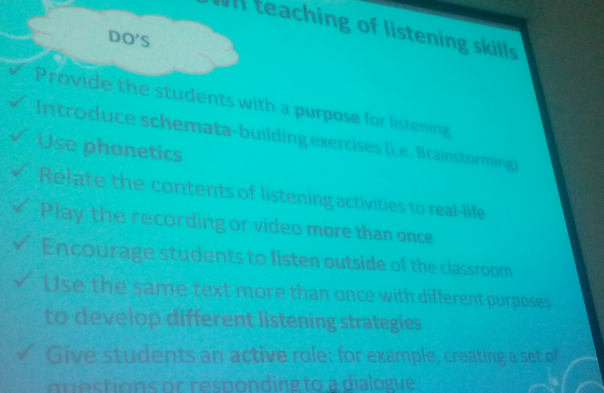
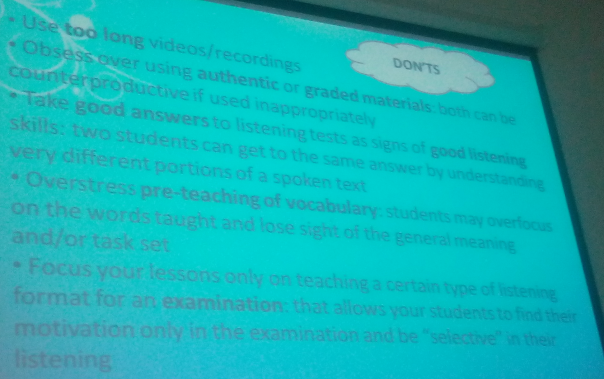
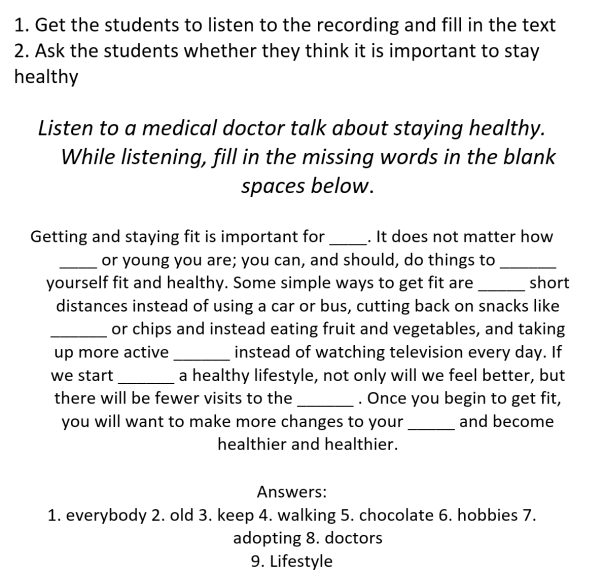
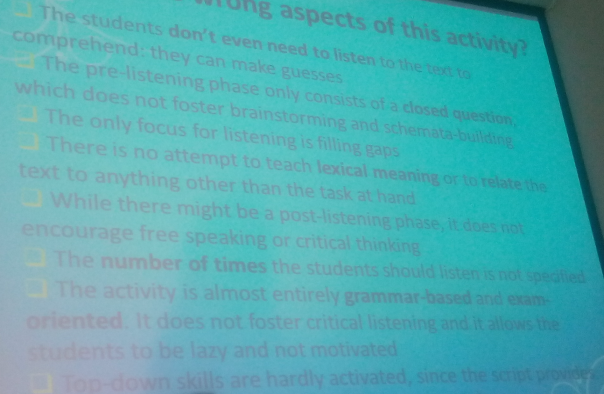
![256331_3965102298242_285721285_o (1) [1661836]](https://teflreflections.files.wordpress.com/2015/11/256331_3965102298242_285721285_o-1-1661836.jpg?w=186&h=300)
